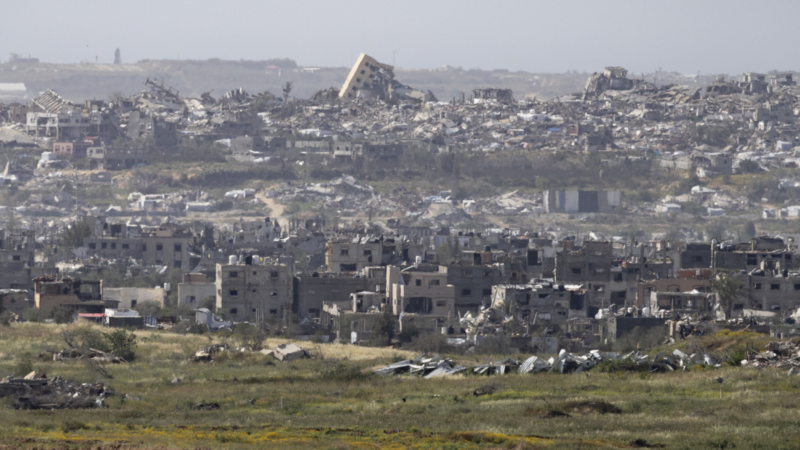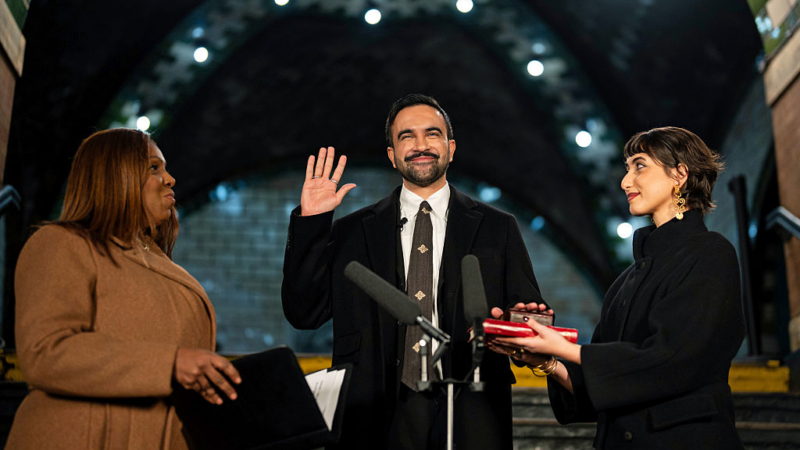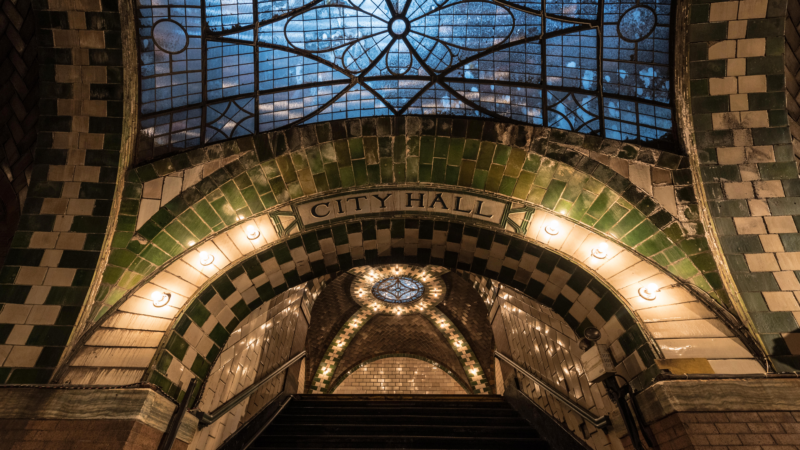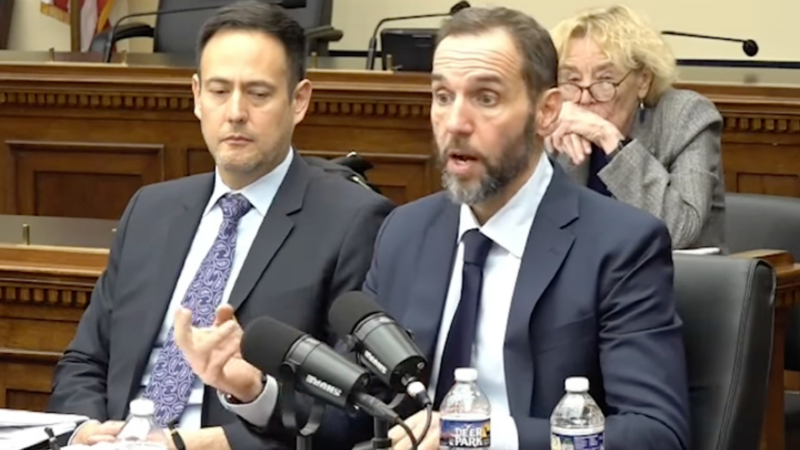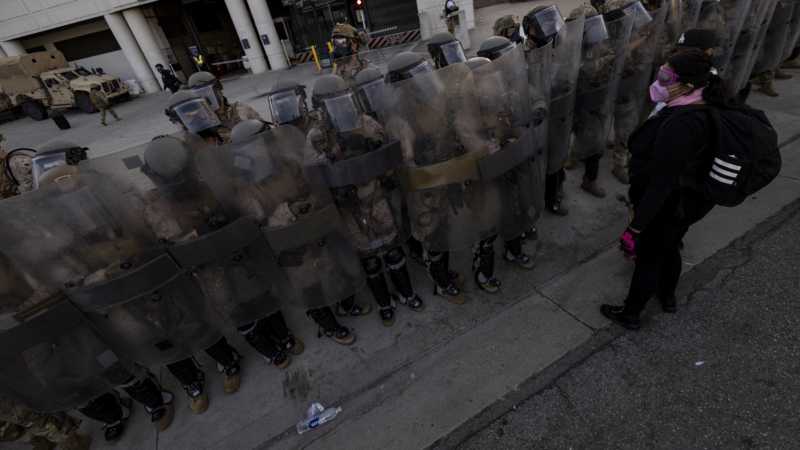Gaza territory shrinks drastically as Israel seizes huge swaths of land
DUBAI — More than half of the Gaza Strip is no longer accessible to Palestinians as Israel’s military takes over larger areas of the territory and absorbs them into what it calls security zones along all of the territory’s borders.
Nowhere is this more visible than in southern Gaza, where Israel’s defense minister says the military is seizing an area once home to a quarter-million people and turning it into a buffer zone. The move cuts off the Palestinian border city of Rafah — and indeed the whole of the Gaza Strip – from neighboring Egypt.
Israel says its war — which Gaza health officials say has killed nearly 51,000 Palestinians — is to pressure Hamas to release the remaining hostages among the 251 taken in the deadly Oct. 7, 2023, attack. That Hamas-led attack killed almost 1,200 people in Israel, according to Israeli authorities.
The takeover of southern Gaza changes its borders and fundamentally alters its map, surrounding the territory by Israel from all sides. Before the war, Gaza’s southern border with Egypt was the only crossing not solely controlled by Israel.
Rafah was also a shelter during the first months of the war for more than a million Palestinians and served as a lifeline for aid coming in from Egypt. It’s also where some people were able to leave Gaza, including those needing medical evacuation.
Israel’s military is tightening its control over Gaza, particularly in the south, after saying months ago that Hamas had been defeated there. Its return to war has sparked criticism within Israel, including among reservists unwilling to report to duty.
Israel’s takeover of southern Gaza alters its map
In a visit to Rafah last week, Defense Minister Israel Katz told soldiers the entire southern swath would be turned into a buffer zone.
“All of Rafah will be evacuated and there will be a security zone,” Katz said in remarks confirmed by his office to NPR. “This is what we are doing now.”
Israel’s military says in addition to capturing a miles-wide area of territory in the south, it’s also deepening and expanding its seizure of territory along Gaza’s northern border.
In his latest statement, posted Sunday on social media, Katz said if Hamas continues to refuse Israel’s terms for a hostage deal, “Gaza will become smaller and more isolated, and more and more of its residents will be forced to evacuate from the fighting zones.”
Israel says that for years weapons were smuggled to Hamas in tunnels that ran under the border from Egypt into Gaza. Egypt says it destroyed those tunnels years ago.
Maps published by the Israeli military show a buffer zone in Rafah that constitutes a fifth of Gaza’s territory. Israel’s displacement of people from the south is one of the largest territorial evacuation orders issued by the military in 18 months of war.
Gaza’s civil defense and paramedics say there are 14 families still trapped in the city of Rafah, unable to flee.
Walid al-Mughayer, a resident of Rafah, says his family was fired on by Israeli forces in the city on March 23 as they tried to heed Israeli evacuation orders. He saw a child killed and five people wounded by Israeli gunfire that day.
“We had to return home from the gunfire,” he says. “For five days we had no fresh water or food … We had to drink the fluid in cans of fava beans.”
He says the family eventually made it to the city of Khan Younis several days later, but don’t have tents or anything to sleep on.
Israeli newspaper Haaretz notes this expansive zone being carved out in southern Gaza covers an area that’s roughly 29 square miles. The newspaper reports Israeli officials have not yet decided whether the entire area will be designated a buffer zone that’s off-limits to civilians, like other parts of Gaza, or whether it will be fully leveled to the ground with the entire city of Rafah wiped out.
NPR documented in January the aftermath of the military’s prolonged invasion of Rafah, following its withdrawal from the city during the temporary ceasefire, from mid-January until mid-March. Most buildings had been damaged or destroyed, including its main hospital.

Israel seizes more than half of Gaza’s territory
In addition to expanding its buffer zones, Israel’s military is dividing Gaza through two corridors. During most of the war it had isolated northern Gaza and Gaza City from the rest of the territory with the Netzarim corridor.
Prime Minister Benjamin Netanyahu announced recently a second dividing line, called the Morag Corridor, that cuts off Rafah and southern Gaza from the middle of the territory and the large city of Khan Younis.
Loading…
Yaakov Garb, an environmental studies professor at Ben Gurion University in Israel, has examined the Israeli military’s maps of Gaza and says approximately half the territory has been explicitly delineated as off-limits to Palestinians. He says there are additional less-explicit zones that Palestinians cannot enter, according to these maps.
In other words, Garb says, the military is adding new buffer zones within Gaza to already existing buffer zones created in the war, where “a systematic kind of leveling” of buildings can be seen in aerial and satellite photos.
He says the two military corridors that cut through Gaza have created two enclaves, amounting to about half of Gaza’s territory, where Palestinians are allowed to be.
“We’ve shifted to a regime in which you have very extensive areas that are functioning more as large moats around shrinking enclaves of the remaining Gazan population,” Garb says.
A report published last week by an Israeli group called Breaking the Silence, which collects the testimonies of Israeli military veterans, describes buffer zones in Gaza that became Palestinian death zones “of enormous proportions.” The report quotes “soldiers and officers who took part in creating the perimeter” saying these border zones are not clearly marked nor defined, “putting the life of any Palestinian who crossed this imaginary line at risk.”
Buildings and agricultural land were destroyed by the military, turning buffer zones into a wasteland, aerial photos show and soldiers say in the report.
When asked for comment on the soldiers’ testimonies, the military replied that it acts in accordance with international law. It says these buffer zones aim “to prevent the enemy from carrying out offensive terrorist activities” against Israel.
The United Nations estimates hundreds of thousands of Palestinians have been newly displaced since Israel went back to war on March 18. Most are living in makeshift, flimsy tents, bombed-out schools or in damaged buildings. There’s also been a siege on Gaza for nearly six weeks, with Israel barring the entry of all goods, including food, medical supplies and fuel.
Since the ceasefire collapsed a month ago, Gaza’s health ministry says more than 1,600 Palestinians have been killed in Israeli airstrikes and attacks, most of them women and children.
Israel’s return to war months after saying Hamas brigades were defeated sparks dissent
Several thousand current and former reservists, pilots, military doctors, intelligence officials and others in security in recent days published open letters last week calling for a change of course in the war and the immediate return of hostages. The letters accuse Israel’s far-right government of favoring its own narrow political interests over the country’s security. Tens of thousands of Israelis have also protested the return to war, saying it endangers the hostages’ lives in Gaza.
The first group of reservists in the Air Force whose letter sparked others were dismissed from serving. In a statement, Netanyahu has described them as a “radical fringe group,” accusing them without proof of receiving foreign funds.
He said the letters “were written by a small handful of weeds, operated by foreign-funded organizations whose sole purpose is to topple the right-wing government.”
Israel estimates 24 hostages are believed to still be alive in Gaza. Most of the 251 hostages taken from Israel in the Hamas-led attack have been freed in negotiated exchanges during temporary ceasefires. Hamas says it’s willing to release all hostages if Israel agrees to permanently end the war. Israel’s government has refused, saying it wants Hamas eliminated and disarmed.
Anas Baba reported from Gaza City.
Transcript:
JUANA SUMMERS, HOST:
Since Israel ended its ceasefire in Gaza last month, the military has been slicing up the territory in a move it says will pressure Hamas to release more Israeli hostages. Its latest operation cuts off an entire city in the south from the rest of the Strip. Joining us now to explain is NPR correspondent Aya Batrawy in Dubai. Hi there.
AYA BATRAWY, BYLINE: Hi, Juana.
SUMMERS: So Israel’s military says it is separating all of southern Gaza from the rest of the territory. How is it doing this?
BATRAWY: So throughout the war, there had been a dividing line already separating the north of Gaza from the rest of the territory. And you might recall, you know, hundreds of thousands of people being able to return north during the ceasefire. Now there’s another dividing line for the south. Now, Defense Minister Israel Katz, he met with Israeli troops in the southern city of Rafah yesterday, in Gaza, and he said the entire southern region would be turned into a security buffer zone and said, that is what we are doing now.
Now, this impacts an area that was home to around a quarter million people before the war. The takeover of the city, Juana, and its entire surrounding territory swallows a huge portion of Gaza and would fundamentally alter the map. Even when Israel had Jewish settlements in Gaza decades ago, Rafah was Palestinian. It borders Egypt, and until the war, this was Gaza’s only land border not controlled just by Israel. And Israel says this is where weapons came in from, in tunnels.
SUMMERS: I would imagine that this would also impact Egypt, too. So what’s their position?
BATRAWY: So these are fast-moving, and there’s been no immediate public reaction to this declaration made yesterday by Israel’s defense minister. But it’s important to note Egypt says there are no tunnels there, that it destroyed them years ago. But Israeli troop movements throughout the war have been very concerning to Egypt. It has been building up its military presence and defenses across Gaza’s border in its Sinai Peninsula, and the military is on high alert, prepared for different scenarios, including the pressure that’s been building on Egypt to be part of President Trump and Israel’s plan to displace Palestinians out of Gaza, which Egypt clearly rejects.
SUMMERS: Rafah was a refuge for more than a million people in Gaza during the first months of the war. But then Israel’s military invaded Rafah and only during the recent ceasefire allowed Palestinians to return. So why is Israel back there now and pushing them out again?
BATRAWY: Well, when Israeli forces were in Rafah the first time, they found hostages and tunnels, and that’s where they killed Yahya Sinwar, the mastermind of the October 7 attack on Israel. But it also said that it had defeated Hamas there and dismantled its brigade six months ago. And so Israel’s government says it’s now returning to war this time to free the remaining hostages – around 20 are believed to be alive – and to eliminate Hamas. But this war aim hasn’t been clearly defined. And in an open letter today, hundreds of Israeli reservists and air force members – former air force members – accuse the Israeli government of serving its own political gains, and they were dismissed from serving.
SUMMERS: Well, with Israel’s forces expanding their ground operations in Gaza, how much territory does the military now control?
BATRAWY: So I posed this question to Yaakov Garb. He’s a professor at Ben-Gurion University in Israel who’s analyzed the military’s public maps, and he puts it like this – more than half of Gaza is now inaccessible to Palestinians, and this new Rafah buffer zone constitutes a fifth of Gaza. He says the military is adding new buffer zones to already existing buffer zones that had been carved out during the first part of the war when thousands of buildings were leveled and agricultural land destroyed.
YAAKOV GARB: We shifted to a regime in which you have very extensive areas that are functioning more as large moats around shrinking enclaves of the remaining Gazan population.
BATRAWY: So as Israel continues to issue these new evacuation orders, people are being squeezed into smaller areas that are also still being bombed.
SUMMERS: That’s NPR’s Aya Batrawy in Dubai. Thank you.
BATRAWY: Thanks, Juana.
Zohran Mamdani sworn in as New York City mayor, capping historic rise
Mayor Zohran Mamdani took the oath of office in New York City after midnight Thursday. The city's first Muslim mayor, a member of the Democratic Socialists of America, has promised to focus on affordability and fairness.
Rising from the ashes, a symbol of hope at the Rose Parade
Survivors of the Eaton and Palisades Fires find healing and community working on a Rose Parade float to honor the lives and communities lost in last year's wildfires.
The history behind the NYC subway station chosen for Mamdani’s swearing-in
The city shut down the station in 1945 on New Year's Eve. Eighty years later, it's a symbolic venue choice for the incoming mayor's private swearing-in ceremony.
U.S. military strikes 5 more alleged drug boats, killing 8
The U.S. military says it struck five alleged drug-smuggling boats over two days. The attacks killed eight people, while others jumped overboard and may have survived. U.S. Southern Command did not reveal where the attacks occurred.
Capitol riot ‘does not happen’ without Trump, Jack Smith told Congress
Former special counsel Jack Smith also described President Trump as the "most culpable and most responsible person" in the criminal conspiracy to overturn the 2020 election results, according to a transcript of Smith's closed-door interview with the House Judiciary Committee.
Trump will drop push for National Guard deployments in Chicago, LA and Portland, Ore.
Courts blocked troops from deploying in Chicago and Portland, Ore., and the Los Angeles deployment effectively ended after a judge blocked it earlier this month.

